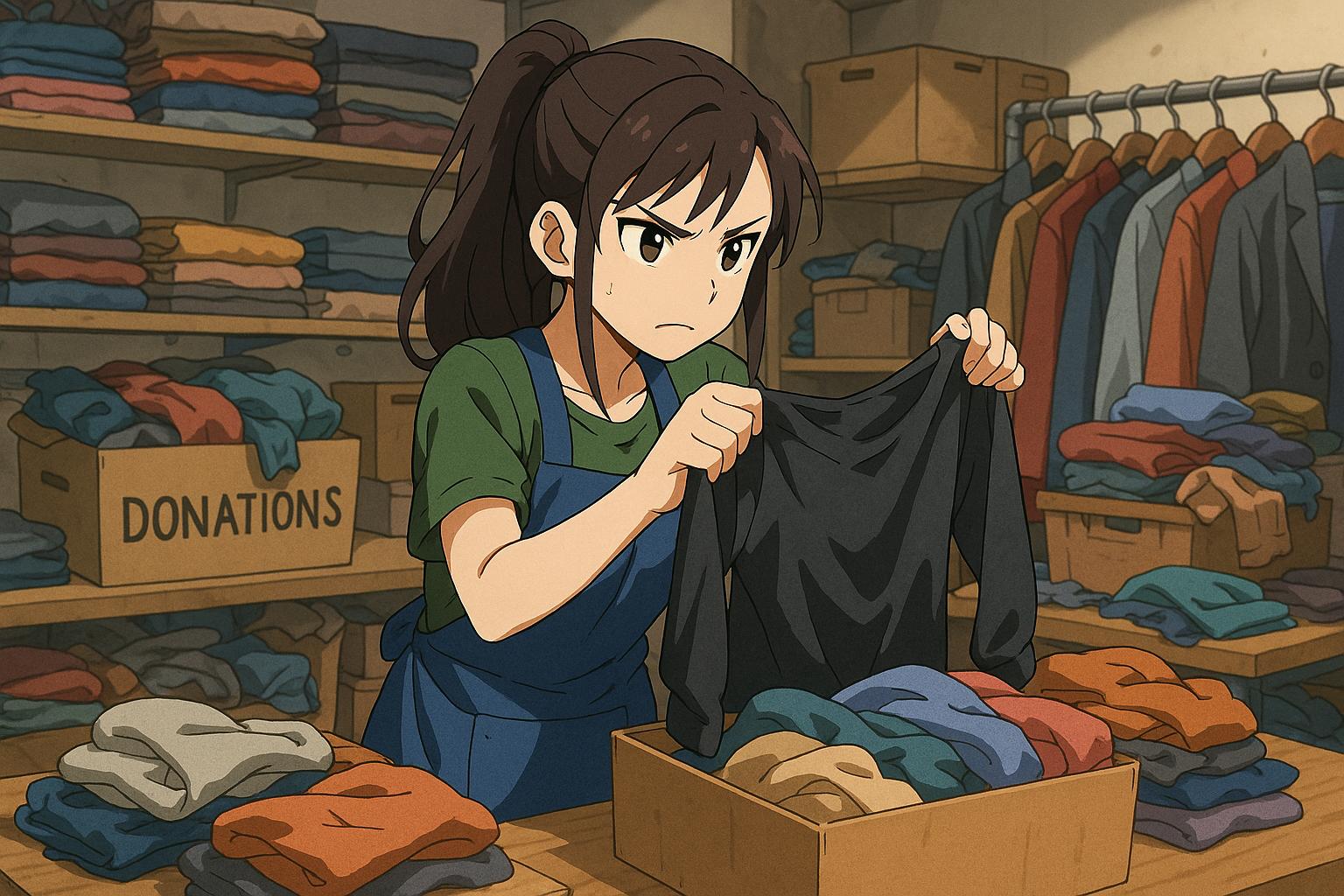Environmental charity WRAP has issued a stark warning regarding the precarious state of the UK's textiles collection industry, foreseeing potential costs of up to £19 million annually for the charitable sector if it were to collapse. This downturn stems from a significant decline in the profitability of used clothing sales, traditionally a lifeline for charity shops reliant on the income generated from donated items. The report highlights that many rag traders, the entities that collect and sort used clothing, are currently operating at a loss, exacerbated by changes in global market dynamics and consumer behaviour.
Historically, these collectors could offset their operational costs by selling reusable textiles abroad. However, the global market for second-hand clothing has deteriorated; factors such as the rise of ultra-fast fashion have flooded the market with low-quality garments, diminishing their resale value. According to WRAP, nearly half of all used textiles in the UK are discarded, with individuals reportedly throwing away an average of 35 items each year. This relentless trend not only threatens the financial viability of the charity sector but highlights a broader environmental crisis linked to unsustainable fashion practices.
Catherine David, the incoming chief executive of WRAP, emphasised the urgency of the situation, calling it an "existential threat" to the collecting and sorting sector, which has been a part of the UK’s fabric for over a century. David stated, “Generating and increasing the value of our worn-out clothing must be fast-tracked if the industry is to be salvaged.” WRAP has suggested potential solutions, including advanced sorting facilities and extended producer responsibility on textile producers, to enhance the system's resilience and sustainability.
The need for policy reform is echoed by Robin Osterley, CEO of the Charity Retail Association, who supports WRAP’s call for initiatives aimed at promoting clothing durability and responsibility in the supply chain. Osterley acknowledges that while economic pressures have led to a dramatic fall in prices paid for unused clothing, there are signs of stabilisation in the marketplace. He points out that the demand for second-hand clothing remains robust, underscoring the role of charity shops in advancing a circular textile economy and raising crucial funds for charitable causes.
Contrastingly, Alan Wheeler, CEO of the Textile Recycling Association, describes an "unprecedented collapse" in the global market for used clothing. He notes that while previously charity shops could expect reasonable returns from selling surplus textiles, they are now struggling simply to arrange collection without incurring additional costs. This decline, accelerated by the COVID-19 pandemic, has led to a situation where supply dramatically outstrips demand, particularly as markets in countries like China have tightened.
To navigate these challenges, Wheeler advocates for enhanced public policy, particularly through measures such as Extended Producer Responsibility. He argues that these initiatives are essential for fostering sustainable practices within the industry. Without significant investment in recycling technologies and improved sorting facilities, the charity sector faces considerable risks, including environmental repercussions and diminished capacity to manage textile waste effectively.
The collective sentiment among charity retailers is one of concern about the long-term implications for the rag trade in the UK. The experiences documenting both the economic challenges and the necessity for systemic change highlight the interconnectedness of consumer habits, environmental sustainability, and charitable funding. As the sector grapples with these complexities, the urgent call for comprehensive solutions becomes clearer—not only to protect the charitable sector but to foster a more sustainable approach to fashion overall.
Reference Map:
- Paragraph 1 – [1], [3]
- Paragraph 2 – [1], [2]
- Paragraph 3 – [1], [4]
- Paragraph 4 – [5], [6]
- Paragraph 5 – [1], [3], [4]
- Paragraph 6 – [1], [2], [7]
Source: Noah Wire Services
